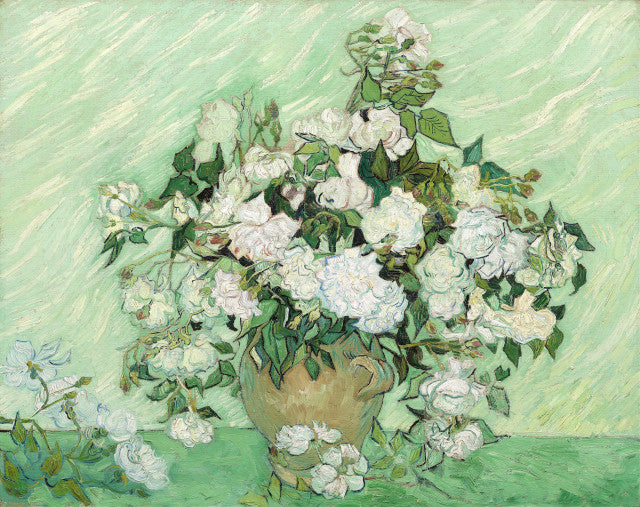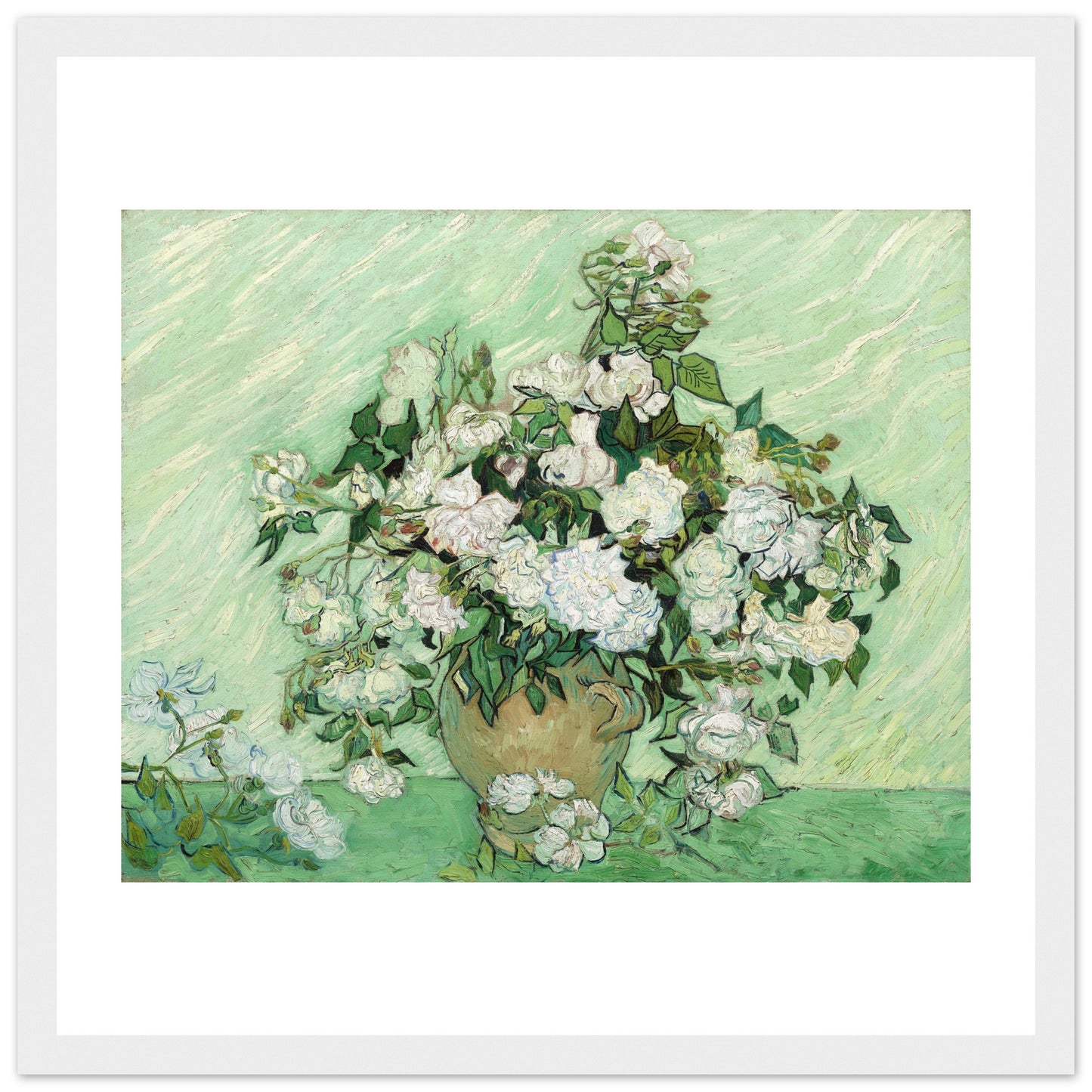Roses (1890)
Roses (1890)
Couldn't load pickup availability
Share
Most people see "Roses (1890)" as a delicate bouquet—soft greens, creamy whites, and a gentle sense of calm. But those who truly understand Van Gogh’s genius know there’s something more beneath the surface. This isn’t just a still life; it’s a quiet storm of emotion, a final conversation between the artist and his canvas.
Painted during his stay at the Saint-Paul-de-Mausole asylum, "Roses" captures a fleeting moment of hope, yet the energy of Van Gogh’s brushwork tells another story. The thick, swirling strokes, the almost feverish movement in the petals, and the restless layering of color all speak to a mind that never settled, even in moments of beauty. The background was once a vivid pink—faded over time to the soft tones you see now—a poetic transformation that only adds to the piece’s depth.
Look closely, and you’ll notice the contrast between the fresh, blooming roses and those beginning to wither. It’s as if Van Gogh himself was acknowledging the fragile line between vitality and decline. There’s something deeply human in that—something that lingers long after you step away.
If you know, you know. And now, that quiet understanding can be part of your space.


















Fast, Trackable Delivery. Wherever You Are 🌍
Made & shipped from 9 global print hubs
Our smart routing system picks the closest production centre to you for speed and sustainability in UK, US, Canada, France, Germany, Netherlands, Norway, Spain, Sweden.
Quick-turn dispatch
Prints leave the studio in 1-3 business days, then typically arrive in:
UK: 3-4 days | US: 4-6 days
Canada: 5-6 days | EU: 3-5 days
Rest of world: ≈ 14 business days
Trusted carriers only
Royal Mail, DHL, UPS, FedEx, Parcelforce, PostNL, Asendia, EVRi, Posten & more—all fully trackable.



